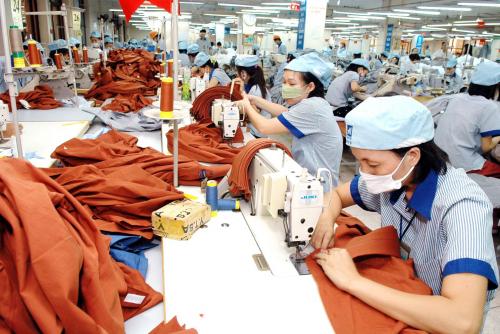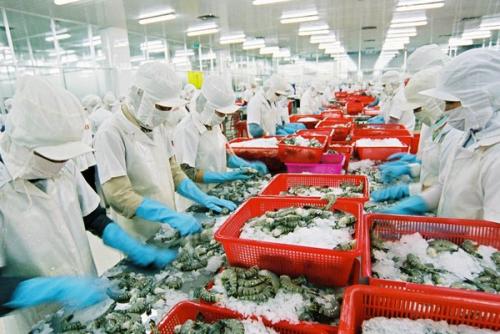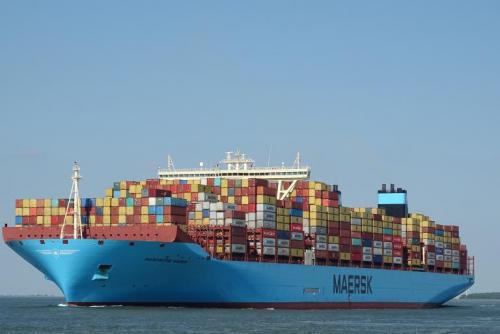Textile Towards Export Target of USD 39 Billion In 2021
This year, Vinatex sets an export target of $39 billion, the average target is $38 billion, which is a high plan equivalent to 2019, 9 months to 2 years faster than the general market.
According to information from the Vietnam National Textile and Garment Group (Vinatex), 2021 is forecast to still be the year the textile and garment market continues to face difficulties, uncertainties and depends heavily on the epidemic situation in the world.
Vinatex's target this year will be to export 39 billion USD, the average target is 38 billion USD. This is a high plan level equivalent to 2019, 9 months to 2 years faster than the general market.

In the past year 2020, Vietnam's economy in general and Vietnam's textile and garment industry in particular were heavily affected by the COVID-19 pandemic, in addition to the influence of the US-China trade war, the trend of trade protection, the UK leaves the EU, ... so the export turnover of Vietnam's textile and garment in 2020 will reach about 35 billion USD.
Particularly, Vietnam National Textile and Garment Group in 2020 has consolidated revenue of VND 15,516 billion, reaching 106% of the plan; consolidated profit reached 628.9 billion dong, reaching 164.8 percent of the plan.
According to world forecasts, the textile and garment market will recover its demand to the level of 2019 as early as the second quarter of 2022 and at the latest by the fourth quarter of 2023. Therefore, 2021 is still a difficult year for the textile and garment market.
Notably, in 2021 many new features of the supply chain will be established as a downward trend that dominates the whole market; simple textile goods replace fashion goods, leading to a lot of excess production capacity but a shortage of new capacity; online business model, reducing intermediaries, requiring management and digital communication with all components of the supply chain...
Dang Vu Hung, General Director of Vietnam National Textile and Garment Group (Vinatex), said that in 2021, Vinatex's team needs to promote its potential and internal resources for growth and continue to strengthen the service segment for successful units. members in business, support to remove difficulties for businesses in terms of policies and laws.
In addition, in order to improve production capacity to respond to the new situation, the Group focuses on supplementing, training and developing high-quality human resources, connecting chains in member enterprises, and increasing efficiency. operations of enterprises with group capital dominate, digitize the management, so that the quality of management is improved, harmoniously develop the yarn, fabric and garment segments.
“In the face of unpredictable challenges of 2021 and the following years, all Vinatex businesses will continue to unite and cooperate, because cooperation will create strength to overcome all obstacles,” Mr. Hung shared. shall.
According to Mr. Le Tien Truong, Chairman of the Board of Directors of Vinatex, in 2021, Vinatex will gain many great lessons, in addition to the traditional lessons of the textile industry such as the spirit of unity, solidarity in difficulties, mutual support and sharing. Sharing and helping each other also has 2 new lessons, that is the spirit of self-reliance and creativity.
"The Group has responded flexibly, freed itself from the thought of relying on external aid sources. In the challenge, it has known to use the crisis to be creative, to grow constantly, to successfully complete the task. service,” said Mr. Truong.

In order to achieve the textile and garment industry's target set out in 2021, in addition to the determination of businesses, Vinatex also recommends the Government to continue to maintain macroeconomic stability, exchange rates and interest rates; At the same time, they are interested in continuing to reduce long-term loan interest rates, as 2021 begins the investment cycle to meet new post-COVID-19 requirements, as well as invest in the production of raw materials to meet export regulations. origin of the FTAs.
“The commercial banking system is flexible in credit rating, after a difficult year with low efficiency, investment projects of textiles and garments, especially investment in yarn and fabric production, are no longer ranked as high priority. Due to difficult access to capital and high interest rates, it is necessary to re-evaluate for the new period corresponding to the recovery speed of the market,” suggested by Mr.Truong.
In particular, the Government needs to have specific policies for the development of the textile and garment supporting industry, including development space and conditions to stimulate development. The localities support the textile industry to develop on the principles of sustainability, clean production that textile enterprises must comply with the global convention of the supply chain.
The Government continues to direct the reduction of non-production costs, especially logistics costs through the planning of the national logistics network, and other tariff costs.
The Ministry of Industry and Trade continues to support businesses to effectively exploit FTAs through the earliest guidance on the processes to meet the Rules of Origin, and a portal to look up benefits from the FTAs.
[Source: Vietnam +]







